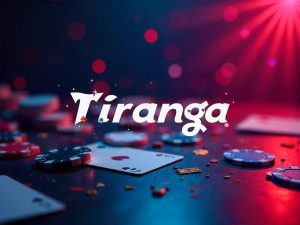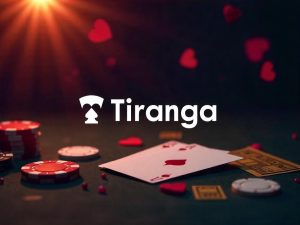
In our colorful digital world, predicting color has moved far beyond art. Today, data science, AI, and everyday mobile apps all use color forecasting. We have machine-learning models guessing the key color in a photo and apps turning color itself into a way to guide user actions. It’s a blend of technology and creativity worth a good look.
This post breaks down how color prediction works, shares real-world examples, and highlights why it’s becoming a must-have feature for digital products.
Defining Color Prediction, the Tech Way
Color prediction tries to guess or identify a color by studying a set of data. Here’s the tech team behind it:
- Machine Learning Algorithms: Using training sets to find patterns.
- Image Recognition Systems: Detecting and classifying color in photos.
- Statistical Models: Using probabilities to estimate likely colors.
- Pattern Recognition Tools: Analyzing shape and texture for attached colors.
In high-end apps, color prediction digs into photo analytics, crunching pixel info like RGB, HEX, or CMYK values, and runs algorithms to either spot the most likely future color or to label an image by its strongest hue.
Key Technologies Used in Color Prediction
Color prediction systems rely on software and math models that work together smoothly. Here are the main technologies that make these systems tick:
🎨 Computer Vision
This area of artificial intelligence teaches machines to “see” and make sense of pictures. For color prediction, it finds color patterns, identifies the most dominant shades, and tracks how colors blend from one to another.
Example: A shopping app can scan a user’s uploaded photo and suggest the colors they are most likely to wear next.
🤖 Machine Learning Algorithms
These models usually train on collections of images tagged with their exact colors. Techniques here use:
- K-Nearest Neighbors (KNN) to spot and group similar colors
- Decision Trees to guess which hues will trend next season
- Convolutional Neural Networks (CNNs) to look at photos and extract color data
📊 Data Analytics and Color Metrics
Not every prediction needs deep learning. Analysts sometimes run statistical tools on a timeline of user choices to spot ongoing trends.
Example: An online clothing store studies past click and purchase data to forecast which shade of a dress will likely be most popular next.
Applications of Color Prediction Technology
Color prediction goes beyond just gaming—it’s a powerhouse in many fields. Check out a few cool ways it’s making a difference:
🎮 Mobile Apps
Some game and editing apps look at what colors players pick and use those choices to suggest the next best color. Patterns in your choices light up a predictive path for the next move.
🖼️ Image Editing Software
Programs like Adobe Photoshop and Canva lock onto what’s happening in the photo and use smart AI to say, “Try THIS shade. It matches perfectly and keeps everything in sync.”
🛒 E-Commerce Platforms
Online stores are starting to say, “Hey, you bought a teal shirt last summer, how about these green sneakers that are trending?” They look at your history, what you hovered over, and even the season to pick colors that catch your eye.
🧪 Scientific Research
In labs, color prediction helps scientists see volcanoes in petri dishes. Chemical or biological tests show color changes, and smart AI figures out if a reaction is happening before you even ask.
How Color Prediction Works: A Simplified Example
Here’s a peek behind the curtain of a color prediction engine in a photo-editing app:
User Uploads an Image
You snap a photo and upload it.
System Reads RGB Values
The app looks at the red, green, and blue (RGB) dance of every pixel.
Image Segmentation
The app slices the photo into sections, putting the teal, the coral, and the mustard into cozy little groups.
Color Clustering
Using a cool technique called K-means, it spots the strongest color crowds in the photo—now it’s ready to suggest a color that fits in like it was always there!
Color Recommendation
This app uses pre-trained models to tell you which filters or adjustments to try, based on a quick guess of which colors will make your photo pop.
Challenges in Color Prediction
Even with the latest tech, developers hit bumps:
- Lighting Conditions: Different lighting can make colors look off in photos.
- Data Bias: If the training images aren’t varied enough, the app might favor certain colors, ignoring others.
- Subjectivity: What looks good to one person might not to another, so guesses can’t always be precise.
- Computational Power: Running color analysis in real-time on a smartphone can eat up battery and CPU.
Best Practices for Building Color Prediction Systems
Planning to create a color prediction tool? Keep these tips in mind:
- Use High-Quality, Diverse Image Datasets: More variety in training images gives better results.
- Apply Dimensionality Reduction: This helps machine-learning models avoid memorizing rather than learning.
- Incorporate Human Feedback Loops: Let users provide thumbs up or down to fine-tune suggestions.
- Optimize for Mobile: Design your model so it gives results without a noticeable delay.
Frequently Asked Questions (FAQs)
❓ What programming languages are used in color prediction?
You’ll mostly see Python, using libraries like OpenCV, TensorFlow, and scikit-learn.
❓ Is color prediction only used in gaming?
Nope! It’s also helpful in fashion forecasting, photography, medical image analysis, and user interface design.
❓ Can AI actually guess color well enough to use in design?
AI stitches together past color choices, pixel layouts, and crowd favorites, then serves a guess about the color we’ll probably like next—guess, not guarantee, because all forecasts flirt with uncertainty.
Wrap-Up
Thanks to faster chips and billions more samples, color guessing is getting sharper and creeping into more daily tools—everything from one-tap photo fixes to style filters that feel like they already know your wardrobe. Whether you build, create, or just geek out on how machines “screen” a spectrum, knowing a bit about how the code thinks helps you peek into the spot where brush strokes and binary code overlap.
As industries everywhere chase the perfect tailored moment for each user, the ability to foretell color will be at the heart of crafting the digital helpers that feel smartest, yet warmest.






